Buy Bravely Default: Where the Fairy Flies: 3DS
Bravely Default: Where The Fairy Flies is a Final Fantasy game. It has all the Final Fantasy spells like Firaga and Meteor, it has iconic equipment like Yoichi's Bow, and it has Red Mages and spear-wielding armored warriors. Square-Enix might be attempting a rebranding, but there's no mistaking that Bravely Default is the latest Final Fantasy game. What separates Bravely Default from, say, Lightning Returns: Final Fantasy XIII is that it's a return to SNES-era Final Fantasy games. There are none of the convoluted plots and hour-long cut scenes that plague the modern titles. It's a throwback to a simpler age, mixed with some modern game design, and for the most part, it's a delight to play.
In Bravely Default, Agnès Oblige is the priestess to the Crystal of Wind. One day, a mysterious darkness overtakes the Crystal of Wind and its elemental counterparts of Earth, Fire and Water. This causes the planet to descend into chaos. The wind stops blowing, the seas putrefy, volcanoes erupt and the land decays. Agnès must save the crystals with the help of Airy, a crystal fairy, while fending off the Eternian Kingdom, an empire dedicated to destroying the Crystal religion. Along the way, she meets Edea, the headstrong daughter of the Eternian Kingdom's leader; Ringabel, a wanderer with amnesia; and Tiz, a boy from a small town. Together, the four set out to cleanse the crystals and save the world.
Bravely Default is a traditional JRPG. You wander from town to town, fighting bosses, collecting items, and occasionally hopping into your airship to explore a new location. There are side-quests aplenty, hidden items to find, and tons of people to chat up. If you grew up on SNES-era JRPGs, you'll feel right at home. The game isn't subtle about its homage to the pre-PSX Final Fantasy games, whether you're battling an evil empire or searching for a rare metal for your airship. It never feels unnatural, but it feels like a long-lost SNES-era RPG with some modern trappings.
The combat system makes the game stand out. It's based on the old-school, turn-based combat system from the very earliest Final Fantasy games, but there's a twist. It still has HP and MP, and it mostly uses a traditional JRPG menu-based combat system. It has a class system just like Final Fantasy V, where you can equip characters with a primary job class that determines their abilities, but you can also assign abilities from other available classes. There's a bunch of customization that you can do, barring a few limitations. You have one job class that gains levels as you use it and one sub-job that retains the active abilities of a class you've already leveled. You can also equip passive abilities, although certain abilities take up more slots than others.
The twist is the titular Brave and Default. At the start of every turn, you get a single Brave Point, which is the cost of one action. By default, you have one action per turn. At any point during your action, you can also choose to Brave, which gives you an additional action at the cost of one BP. You can even go up to -4 on BP to have four actions during a turn. The trick is you need a BP to act, and until you get out of the negative numbers, your character is helpless for as many turns as it takes to replenish your BP. This can be useful for quickly nuking down a random encounter, but it can get you smashed in a boss fight.
This is where the other option comes in. Default allows you to defend that turn and avoid spending your BP, so you can bank it for later use. Default four times in a row, and you can attack four times in a row without a penalty. Certain attacks also use BP as a currency. Your best attacks or healing spells may require multiple BP, which requires you to either bank some BP beforehand or be vulnerable after using them.
Enemies also Brave and Default, and they have their own attack patterns and methods. An enemy may choose to Default until they have enough points to unleash a swarm of devastating attacks or Brave to beat you down and leave themselves vulnerable. Winning in battle involves understanding the enemy's Brave and Default rhythms.
You also have the optional of customizable special attacks, which depend on your equipped weapon(s). Each weapon type has an associated condition attached, and once you fulfill the requirement enough times, you gain access to a special move, which can lower enemy defenses or buff your party in addition to its damage or healing properties. You can customize this further with power boosts, elemental effects, enemy-special weaknesses, status effects, MP healing, and so on. Functionally, they are Limit Breaks, though they're easier to use.
Each of the four characters has his or her own theme music. When you use a special attack, the game plays that character's music, and it even overrides the battle theme for a short time. As long as the theme music is playing, you retain the buffs (or debuffs). If you override one character's theme music with another, you'll retain the buff effects of both songs, and this continues for a third or even a fourth special attack. If you chain together special attacks, you can keep your party buffed while listening to rocking music.
At any point during a turn, you can spend SP to stop time and take immediate action. You can bank up to three SP at once, and you gain one SP for roughly every eight hours you leave the 3DS in sleep mode. The other choice is to pay for one with real money from the microtransaction shop. It is never necessary, but it's annoying to have a gameplay feature that seems to exist only to squeeze a dollar from a stuck player.
Bravely Default boasts a few design features that should become standard for JRPGs from now on. The most noteworthy is the ability to adjust the difficulty on the fly, and I don't just mean easy/normal/hard. You have complete control over the encounter rate, so you can set it anywhere from 0% to 200% of the normal rate. It's hard to communicate how wonderful this feature is. This level of control seems like a small thing, but it really makes the experience much more enjoyable.
There's also an interesting social feature. Tiz's hometown of Norende Village was destroyed, and Tiz is working to rebuild it. You do this by recruiting people to help, either via the Internet or Spotpass. Each person you meet gives you one villager, and you're limited to four a day from the Internet but an effectively infinite number via Spotpass. Each villager can be assigned to a construction task, such as repairing or upgrading something in the village. If you've played a Facebook game, you know what to expect. Fixing and upgrading Norende unlocks equipment and items for you to purchase from the Adventurer shop, including rare high-end equipment and special costumes. It isn't anything that is required to succeed (the high-end stuff is incredibly expensive), but it's a neat feature that can give you a potential boost.
Anyone on your 3DS Friends List who also has the game can invite your character to their game, and vice versa. You can summon a friend's character, who has an attack that your friend has set up: huge damage, heal your team, throw money at you, or slash with a dagger. This can be used once per day but offers a helping hand for tough battles. Then there's the Abilink system. Your friend's character retains all of his or her job levels, so you can Abilink that character to one of your own and gain access to that character's skills. This can give you access to abilities you wouldn't get for a long time. The game also uses the Friends feature for something pretty cool during the plot, but I won't spoil it.
For the first four chapters, Bravely Default is an absolute delight. Then we hit the fifth chapter. From that point onward, the cracks begin to show, and the game becomes frustrating. As a forewarning, I'll discuss the context — but not the content — of the last chapters. Consider this a spoiler warning.
Chapter 5 involves a Groundhog Day-style reversal to the start of the game. All the bosses you beat became undefeated, and all the crystals you restored are returned to their former corruption. On the plus side, you retain your airship and all of your stats and abilities. You're expected to reignite the crystals again, but the big problem is that it's all recycled content. You can jump straight to the crystals instead of fighting every boss again, and the crystal dungeons remain mapped out and the treasure remains looted, though the enemies are slightly tougher.
This might just be an annoyance, but then Chapter 6 does it again. So does Chapter 7. So does Chapter 8. You'll spend four solid chapters hitting the same four dungeons again and again. Even with random encounters turned off, it's a long and tedious process. You can choose to end this cycle early if you want, but if you do, you're denied access to the final boss, ending plot, and special post-game video.
Additionally, the true ending and special video are a cliffhanger and a direct advertisement for the sequel, respectively. The game ends well enough, but a last-minute twist does little to endear the plot to anyone.
This really casts a shadow over the game. It halts the story, and it does so around the same time you've run out of jobs to collect. There are many games that involve retreading areas or backtracking, but they usually make it feel more worthwhile and offer some new content. To its credit, Bravely Default offers remixed optional boss battles where the bosses attack in groups, but their gimmicks and tells are mostly the same. There are also treasure chests you can unlock starting in Chapter 6 with the game's best equipment. In every dungeon, there are blue chests that were locked during your first time through just to give you an excuse to trek back for it in Chapter 6. The game basically runs out of original content around the fifth chapter but continues for four more chapters and feels like tedious busywork.
Is this enough of a flaw to ruin the game experience? That's going to depend on the player. I didn't put the game down, but it brought my momentum to a halt and made it difficult to want to continue. Fortunately, the ability to control optional encounters and the ease of leveling up alleviated the grind.
Bravely Default is a nice-looking game. The character models are simple, both in design and animation, but they do a good job of capturing the aesthetic of SNES-era sprites in a 3-D environment. It's certainly better than Final Fantasy IV DS. The backgrounds are pre-rendered but lush and beautiful. Every area, especially the towns, looks delightful. Many of the locations are small but never feel cramped, aside from one city late in the game. It isn't phenomenal-looking, but it's a very charming-looking game.
The soundtrack is fantastic. It's one of Square Enix's best, and pretty much every song is a hit. The only downside is a relative lack of variety. You'll hear the same dungeon song again and again, and while it's very good, it can't sustain an entire game on its own. The voice acting is mostly good, though it can veer between quite good (Ringabel) and screeching (Agnès). Those who prefer the Japanese voice track can use it instead, but the English one seemed good enough to me.
Bravely Default: Where The Fairy Flies comes remarkably close to being one of the best JRPGs I've ever played. The combat system is exciting, difficult, and highly customizable. The early design is wonderful, and the level of freedom with the game's difficulty makes it easy for anyone to play. Unfortunately, the game design falls so heavily in the last chapters that it becomes a chore to finish. That's still 25 hours of great gameplay before 5-10 hours of tedium, but it's enough to drag down the experience. If you're a JRPG fan, you must play Bravely Default. It comes so close to greatness that it's possible to overlook its glaring flaws. Just be warned that it'll be a slog to get to the end.
Score: 8.0/10
More articles about Bravely Default Flying Fairy HD Remaster


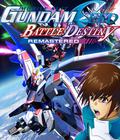
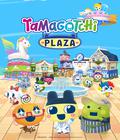
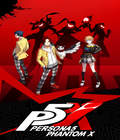
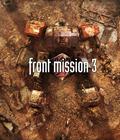
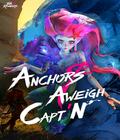
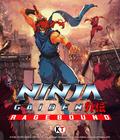
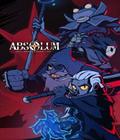
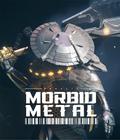

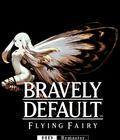 Bravely Default: Where the Fairy Flies is a traditional turn-based role-playing game, considered a spiritual successor to Final Fantasy: The 4 Heroes of Light.
Bravely Default: Where the Fairy Flies is a traditional turn-based role-playing game, considered a spiritual successor to Final Fantasy: The 4 Heroes of Light.






































